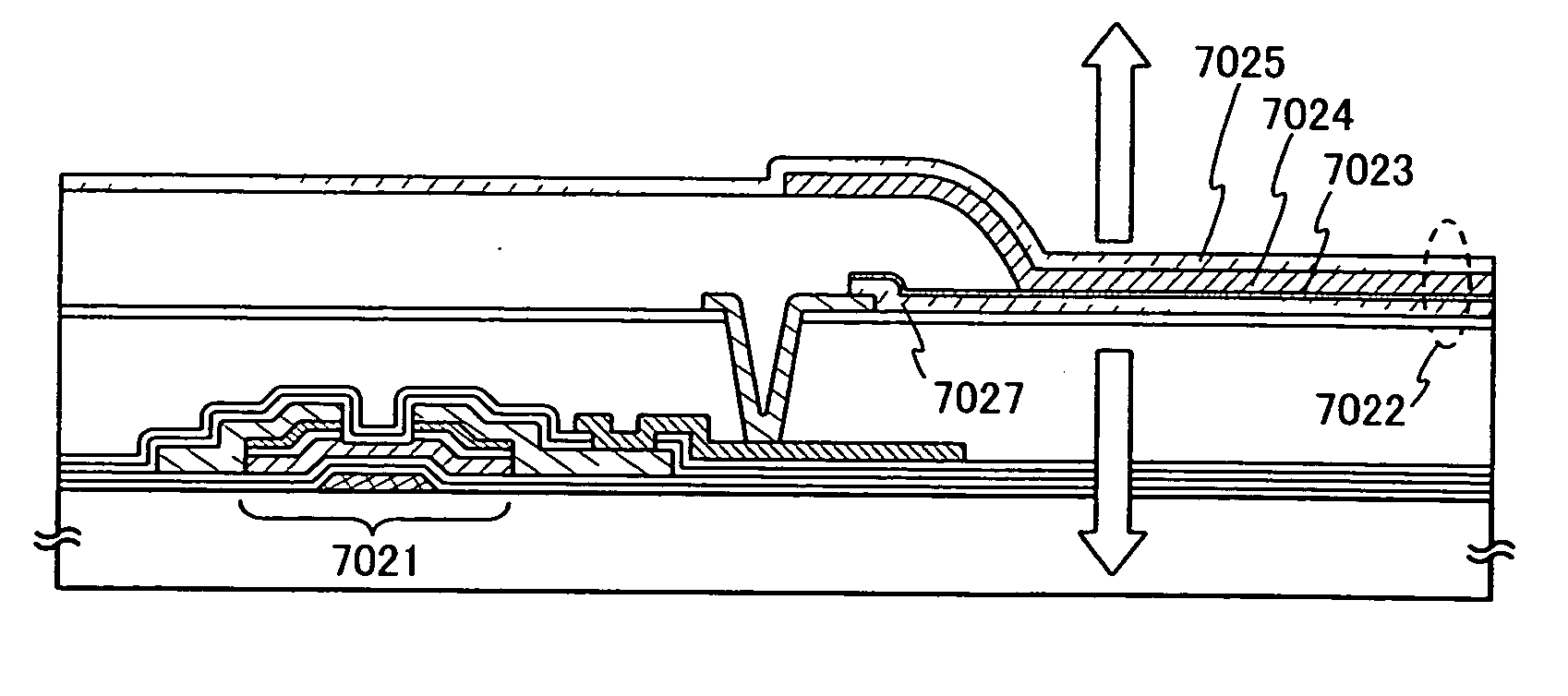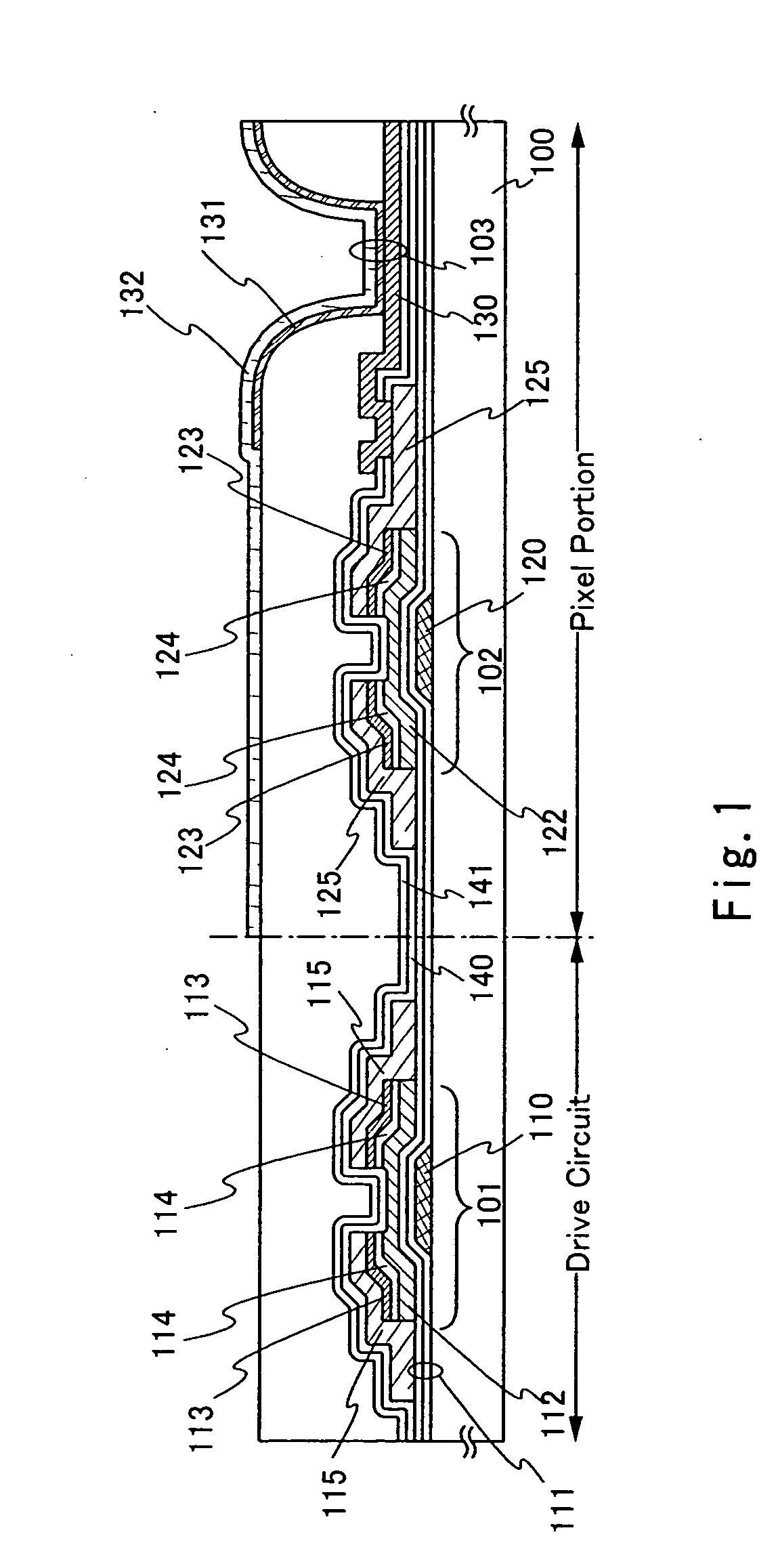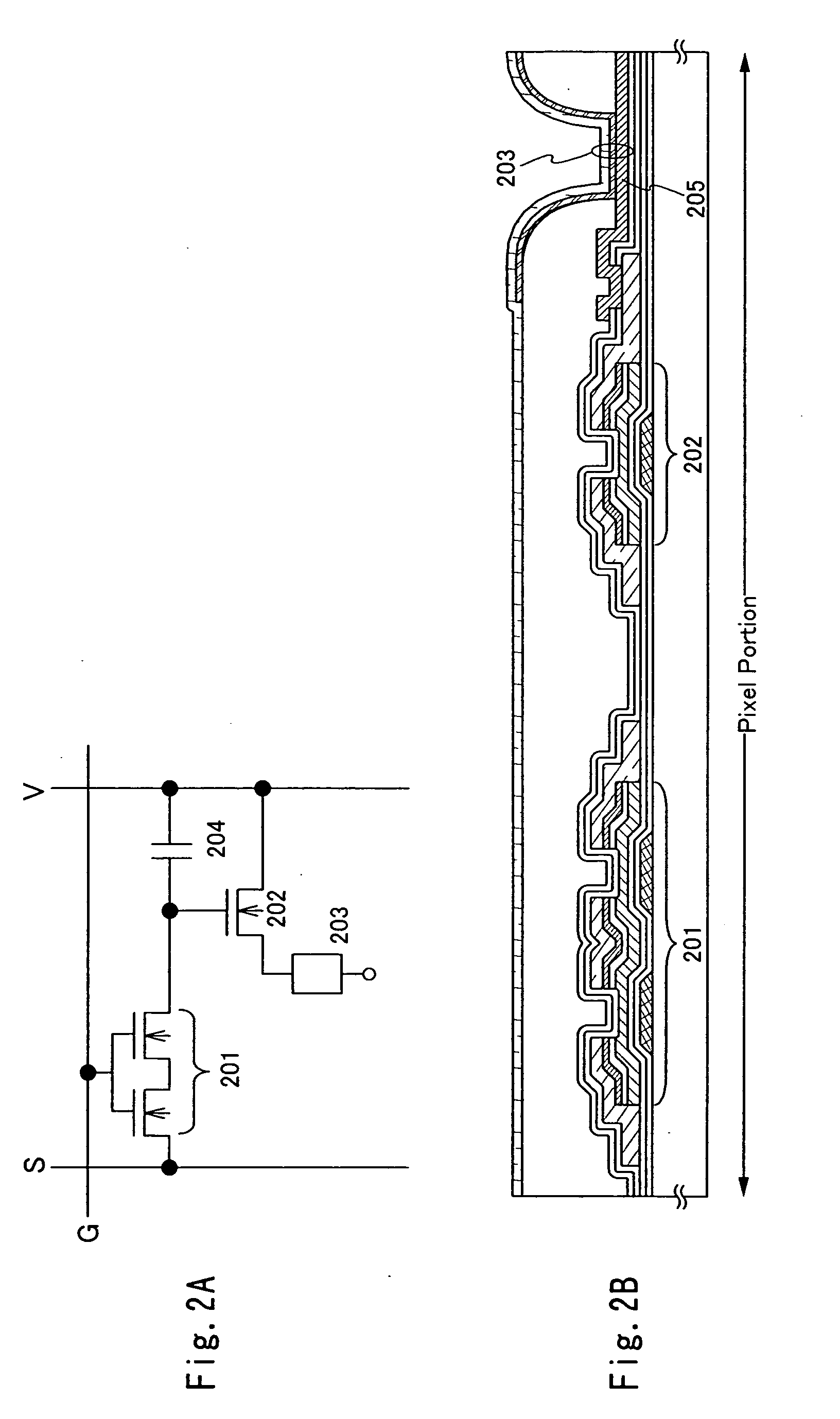Light-emitting device
a light-emitting device and light-emitting technology, applied in the direction of organic semiconductor devices, instruments, optics, etc., can solve the problems of reduced yield, increased cost, and limitation in the mounting method of ic formed by a single crystalline silicon wafer on a glass substrate, and achieve the effect of reducing cos
- Summary
- Abstract
- Description
- Claims
- Application Information
AI Technical Summary
Benefits of technology
Problems solved by technology
Method used
Image
Examples
example 1
[0101] A semiamorphous TFT that can be used in the present invention can be either n-type or p-type. The semiamorphous TFT is preferably n-type since an n-type semiamorphous TFT has high mobility and is suitable for using as a pixel of a light-emitting device. In this example, a cross-sectional structure of a pixel is explained using an example of an n-type drive TFT.
[0102]FIG. 11B is a cross-sectional view of a pixel used in the case that a drive TFT 7001 is n-type, and light generated in a light-emitting element 7002 emits passing through an anode 7005. In FIGS. 11A and 11B, a cathode 7003 of the light-emitting element 7002 and the drive TFT 7001 are electrically connected each other. An electroluminescent layer 7004 and an anode 7005 are sequentially stacked over the cathode 7003. As the cathode 7003, a known material can be used as long as it is a conductive film having small work function and reflects light. For example, Ca, Al, CaF, MgAg, AlLi, or the like is preferably used....
example 2
[0112] In this example, an example of variation of a pixel using a semiamorphous TFT included in a light-emitting device according to the invention is explained.
[0113]FIG. 12A shows an embodiment of a pixel according to this example. A pixel shown in FIG. 12A comprising a light-emitting element 901, a switching TFT 902 used as a switching element for controlling the input of a video signal to the pixel, a drive TFT 903 for controlling a current value flowing through the light-emitting element 901, and a current control TFT 904 for determining to supply current or not to the light-emitting element 901. Moreover, a capacitor element 905 for holding electric potential of a video signal may be provided to the pixel as in Embodiment.
[0114] The switching TFT 902, the drive TFT 903, and the current control TFT 904, which may be either n-type or p-type, have the same polarity. The drive TFT 903 operates in a saturation region and the current control TFT 904 operates in a linear region.
[0...
example 3
[0126] In this example, one embodiment of a semiamorphous TFT included in a light-emitting device according to the invention is explained.
[0127]FIG. 13A is a top view of a semiamorphous TFT. FIG. 13B is a cross-sectional view of FIG. 13A taken along line A-A′. Reference numeral 1301 denotes a gate wiring a part of which serves as a gate electrode. The gate wiring 1301 overlaps with a first semiconductor film 1303 formed by semiamorphous semiconductor via a gate insulating film 1302. Second semiconductor films 1304a, 1304b are formed on the first semiconductor film 1303. Third semiconductor films 1305a, 1305b imparting one conductivity type are formed on the second semiconductor films 1304a, 1304b. Each reference numeral 1306, 1307 denotes wiring formed on the third semiconductor films 1305a, 1305b.
[0128] In a semiamorphous TFT shown in FIGS. 13A and 13B, a channel length can be kept constantly by spacing out the interval between the third semiconductor film 1305a and the third sem...
PUM
 Login to View More
Login to View More Abstract
Description
Claims
Application Information
 Login to View More
Login to View More - R&D
- Intellectual Property
- Life Sciences
- Materials
- Tech Scout
- Unparalleled Data Quality
- Higher Quality Content
- 60% Fewer Hallucinations
Browse by: Latest US Patents, China's latest patents, Technical Efficacy Thesaurus, Application Domain, Technology Topic, Popular Technical Reports.
© 2025 PatSnap. All rights reserved.Legal|Privacy policy|Modern Slavery Act Transparency Statement|Sitemap|About US| Contact US: help@patsnap.com



